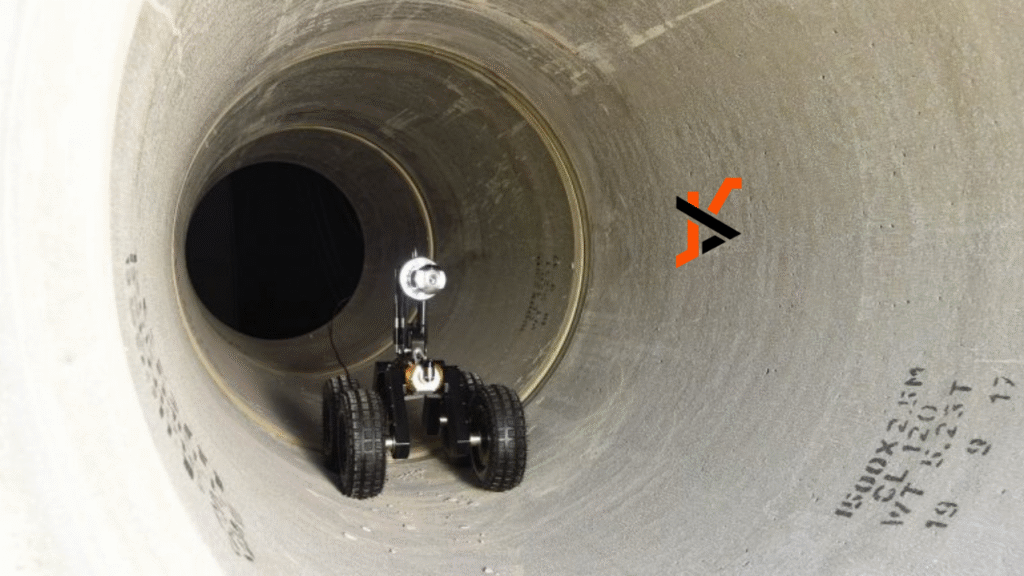The infrastructure of modern cities largely depends on efficient drainage systems. Ensuring that drainage networks operate smoothly is critical for urban maintenance and sustainability. With the advancement of technology, CCTV pipe inspections are becoming an indispensable part of proactive drainage maintenance strategies. This article explores the innovative realm of CCTV pipe inspections, their benefits, and implications for the future of drainage maintenance.
Introduction to CCTV Pipe Inspections
Traditionally, inspecting the condition of underground pipes involved significant disruption, with excavation being necessary to physically access the pipes. Instead, CCTV pipe inspections now allow for a non-intrusive method to visually inspect the interior of drainage pipes. This sophisticated technology involves inserting a camera into the drainage system, offering real-time high-resolution images of the pipe’s interior. This has revolutionised the approach to drainage maintenance, allowing for more accurate, efficient, and cost-effective solutions.
Understanding the Technology
CCTV pipe inspection technology consists of a remotely operated camera mounted on a wheeled or tracked robotic crawler. An operator carefully guides the camera through the pipe network, capturing video footage that is transmitted to the surface for assessment. The flexibility of the equipment makes it suitable for pipes of various sizes and materials, from small residential lines to large municipal channels.
Benefits of CCTV Pipe Inspections in Maintenance
The introduction of CCTV pipe inspections to the field of drainage maintenance has brought about a multitude of benefits that extend beyond simply reducing the need for excavation.
Accurate Diagnostics
One of the primary advantages of using CCTV for pipe inspections is the accuracy of diagnostics. The cameras provide clear visuals of the pipe’s condition, revealing cracks, blockages, intrusions, or other anomalies. This detailed insight enables precise identification of issues, helping to formulate targeted solutions.
Preventive Maintenance
Proactive maintenance is a significant benefit of CCTV pipe inspection. By regularly inspecting drainage systems, potential issues can be identified and addressed before they escalate into major problems, helping to avoid costly and disruptive repairs in the future.
Environmental Considerations
CCTV pipe inspections are also environmentally friendly, as they reduce the need to dig up land, thereby preserving the natural landscape and reducing the carbon footprint associated with heavy machinery and repair works. This is essential in promoting sustainable urban development.
Cost and Time Efficiency
Utilising CCTV for inspections contributes to substantial cost and time savings. Speedy diagnostics mean that time-sensitive issues can be addressed promptly, and maintenance can be carried out with minimal disruption to surrounding infrastructure and daily routines.
Implications for the Future of Drainage Maintenance
The implications of integrating CCTV pipe inspections into regular maintenance regimes are significant.
Emergence of Predictive Analytics
With continual advancements in technology, CCTV footage can be further analysed using predictive analytics software. This provides the capability to anticipate future problems by identifying patterns that may indicate a predisposition to certain issues within the drainage system.
Integration with GIS and BIM
Geographic Information Systems (GIS) and Building Information Modeling (BIM) are powerful digital tools that can be used in conjunction with CCTV pipe inspections. Integrating the footage and data collected from the cameras within these platforms can provide a comprehensive understanding of the drainage infrastructure, facilitating better planning and management.
Remote Accessibility
The advent of internet connectivity and cloud storage has made it possible to access inspection data remotely. This not only streamlines the maintenance process but also allows for expert analysis from professionals around the globe, ensuring that the best practices are applied in the maintenance of drainage systems.
Continuous Innovation
Innovations such as the development of more agile cameras, advanced image analysis algorithms, and integration with artificial intelligence suggest that CCTV pipe inspections will only become more sophisticated and effective in the years to come.
Adapting to the Changing Landscape of Drainage Maintenance
Facility managers, urban planners, and maintenance professionals must adapt to these technological advances to keep pace with the evolving landscape of drainage maintenance. Continued education and investment in new technologies are crucial for harnessing the capabilities that CCTV pipe inspections offer.
Enhancing Workforce Capabilities
The shift towards technologically driven maintenance strategies implies that the workforce must be educated and trained in the use of advanced tools like CCTV for inspections. This will ensure the longevity and reliability of drainage systems well into the future.
Policy Implications and Best Practices
Lastly, policymakers need to consider incorporating standards and best practices that encourage the use of technologies such as CCTV pipe inspections. This will ensure that cities and communities benefit from efficient, cost-effective, and sustainable drainage maintenance practices.
Conclusion
In conclusion, the future of drainage maintenance is intrinsically tied to the adoption of technologies like CCTV pipe inspections. This method leads to improved diagnostics, preemptive maintenance, environmental sustainability, and cost efficiency. The continued development of this technology, alongside integration with other digital platforms, is set to revolutionise how we approach the critical task of keeping our drainage systems in optimal condition. By embracing these advancements, we are paving the way for smarter, more resilient urban infrastructures.

